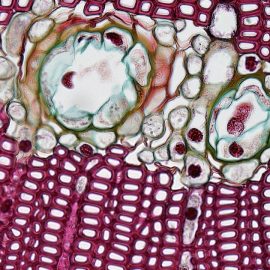

This article is an excerpt from the Shortform book guide to "The Sports Gene" by David Epstein. Shortform has the world's best summaries and analyses of books you should be reading.
Like this article? Sign up for a free trial here .
What’s the average height of a basketball player? Apart from height, what are the other key characteristics of a professional basketball player’s body type?
Basketball players in the NBA are generally much taller than the average man. Only 5% of men in the US are taller than 6 feet 3 inches. The average height of an NBA player is 6 feet 7 inches. In addition to height, basketball players tend to have longer arms, far outside the norm for the general population.
Let’s take a look at the key characteristics of a professional basketball player’s body type.
Basketball Player Body Type
It’s no secret that height is a clear advantage in basketball. It puts you nearer the hoop for both shooting and rebounding and allows you to block shots more effectively while being harder to block. A man’s chances of playing professional basketball correlate strongly with his height.
- If a man is between 6 feet and 6 feet 2 inches, he has a five in one million chance of being in the NBA.
- Men in the height range of 6 feet 10 inches to 7 feet have a 3.2% chance of being in the NBA.
- At seven feet tall, the chance of being in the NBA is 17%.
- 11% of players in the NBA are seven feet tall, a staggeringly large percent given how rare that height is in the general population.
In addition to height, having long arms another key characteristic of an ideal basketball player’s body type. Basketball players generally have a very large wingspan. Epstein explains that arm span is a pretty good approximation of height for most of us. (For context, an arm span to height ratio greater than 1.05 is abnormal and can be a sign of a disorder called Marfan syndrome, characterized by elongated arms and legs). The average ratio for NBA players is 1.063. This means that a 6 feet 7 inches tall player can have arms that would fit a seven-foot frame.
Epstein notes that a large wingspan is an advantage in basketball, especially when blocking shots. “Shorter” players usually have an even greater wingspan to height ratio than their taller teammates, which balances out their lack of height.
- Water polo players also have large wingspans, with an additional feature. Elite water polo players have relatively longer forearms. Epstein notes that this allows them to whip the ball more effectively.
| Advantageous Traits in Sports May Not Be an Advantage Off the Court Multiple studies from both human and animal populations have shown that smaller individuals live longer than larger ones. A study of nearly 4,000 basketball players showed a correlation between height and mortality, with the tallest players dying younger than the shortest players. Science has not unraveled the mechanism by which height seems to shorten lifespans. As the study on basketball players explains, one idea is that taller and larger people simply have more mass to maintain into old age. Bigger bodies have more cells, which means that their bodies constantly need to generate more new cells. As we age, our body’s ability to generate new cells decreases. This means that larger bodies are at a greater risk of disease in old age because they are less able to replace diseased and damaged cells. While the basketball player’s height is largely a genetic attribute (specifically, height), some athletes intentionally make themselves larger for sports performance. Linemen in the NFL need to be large to be effective players. But the weight they maintain or put on for the sake of the game can damage their long-term health. Linemen have hypertension, obesity, and sleep apnea at higher rates than both the general population and other football players. They may also be more at risk for severe heart conditions, particularly after they retire. All of these conditions can have an impact on players’ quality of life, and even their life expectancy, off the field. |

———End of Preview———
Like what you just read? Read the rest of the world's best book summary and analysis of David Epstein's "The Sports Gene" at Shortform .
Here's what you'll find in our full The Sports Gene summary :
- A look at how our genes play a determining role in our success in sports
- Why practice doesn't always guarantee success
- The fortuitous gene pairings that can lead to elite athleticism






